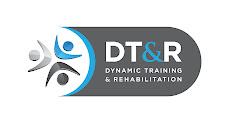Everything I read online, from blogs, twitter, accounts, and articles, everyone seems to be a true advocate of find the dysfunction, treat the dysfunction, and pain will go away!
When it comes to the neck, all these rules seemingly disappear!
When a patient/client with chronic posterior neck pain (fairly common now in our society), most practitioners seem to work strictly on those muscles, the ones in pain!
Why do we do this? Does it Help Our Patients?
Most professionals do not truly understand the neck or sometimes weary of entering the anterior structures because there is so much “stuff” located here, like the brachial plexus, important arties, and lymph nodes.
There are many important structures that need to be addressed when dealing with posterior neck pain. For the purpose of this informational blog, we are only going to go through two:
Two anatomical components that we should look for when treating chronic neck pain or even shoulder pain is Cervical Fascia and Longus Colli Muscle. Working on those muscles in the back of the neck will only create instant pain relief.......and only last for a few hours.
First to the Anterior Fascia Structures: We are going to focus on Deep Cervical Fascia
Most of us tend to think of the myofascia, or the fascia, in terms of the musculature. The fascia, in its broader context, lines all the body structures, including the muscles, joints, and bones. Consider the middle cervical fascia, a structure that connects a whole series of muscles throughout the front of the neck
The deep cervical fascia surrounds the body of the vertebrae in the cervical spine. The Anterior part of this fascia extends down to the first rib. Motions palpate the cervical spine and look for the most restricted region from C2 down. On a personal note, I look to start laterally and move medially.
The correction of this fascia can follow the assessment.
The second anatomical structure that should always be assessed and treated with neck complaints is the Longus Colli muscle.
The deep flexor muscles of the neck are often referred to as the abdominals of the neck. Proper strengthening, manual therapy, and motion of these muscles are vary important for stability of the neck, and balance.
They lie right over the anterior cervical vertebrae. To get to this muscle, push aside the trachea and apply gentle pressure with your fingertips. Be wary of the carotid artery and internal jugular vein
Here is a great video that is for strengthening of the deep muscles of the neck:
Another Great way to Stretch Anterior Neck Muscles:
Sit or stand with your right hand around
your neck and your fingers and thumb on
the muscles on either side of your throat.
You may place your left hand on top of
your right for support as shown. Start with
your hands close to your chin and begin
with your chin at your chest
Slowly bend your neck backward as
you simultaneously slide your hands
toward your chest, stretching the muscles
on the front of your neck.
CAUTION: Always move slowly when doing neck stretches.
Try to elongate your neck so you don’t compress your vertebrae
(bones). Read all the instructions and cautions thoroughly
before beginning. You should never feel pain!
















This is awesome. I am tweeting this for sure
ReplyDelete